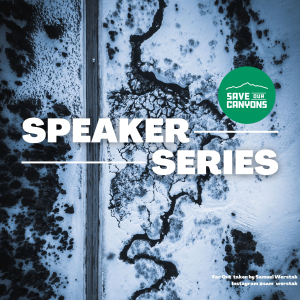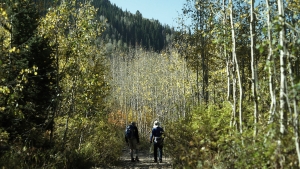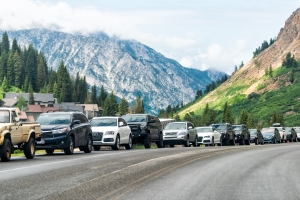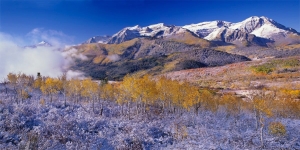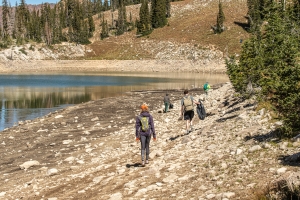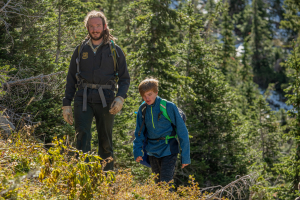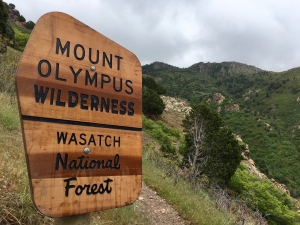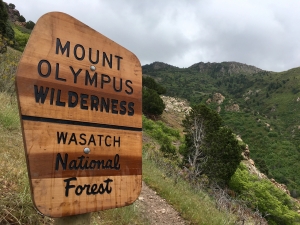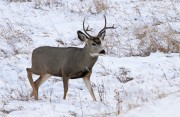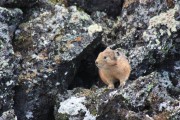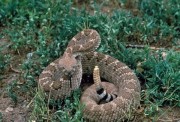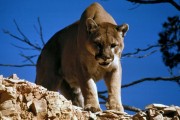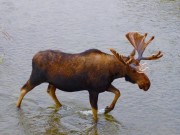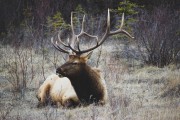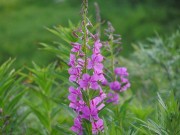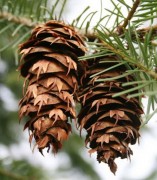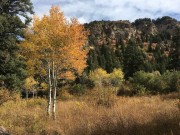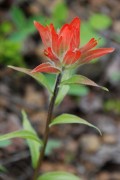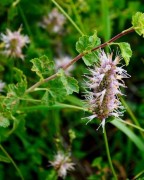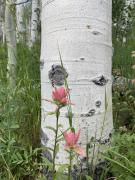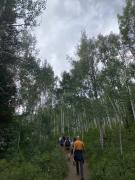Grace Tyler
Save Our Canyons Speaker Series
Our Speaker Series held during March 2021 gave an opportunity to celebrate the Wasatch Mountains, while practicing social distancing. The Speaker Series featured unique voices about water, climate change, and conservation of wild places followed by a short presentation on current issues Save Our Canyons is tackling.
If you missed any of our events we recorded them over Zoom and uploaded them to YouTube. Turn the video on while working and listen as you would a podcast or grab a beverage and host a Save Our Canyons Speaker Series at your home!
Save Our Canyons would like to say thank you to Brad Meiklejohn, Ayja Bounous and Torrey House Press, and Laura Briefer and Mike DeVries for participating in our Speaker Series!
_________________________________________________________________________________________
"Wasatch to the Arctic Refuge" with Brad Meiklejohn
Save Our Canyons would like to say thank you to Brad Meiklejohn for hosting the first Save Our Canyons Speaker Series on March 17,2021! Brad Meiklejohn was a forecaster at the Utah Avalanche Center from 1983-1992. He has served as Alaska State Director for The Conservation Fund since 1994. Brad has also served as President of the Patagonia Land Trust, President of the American Packrafting Association, and served on the boards of the Murie Center and the Alaska Avalanche School.
______________________________________________________________________________________________
"Shaped By Snow: Defending the Future of Winter”
Give a big round of applause to Ayja Bounous and Torrey House Press for hosting "Shaped By Snow: Defending the Future of Winter” on March 24th. During this video Ayja will be leading you on a place-based workshop that will help you explore your relationship with the Wasatch, thereby working to establish through story, a new myth for the Wasatch, that pushes against the current myth — which is a narrative of domination.
Before clicking play make sure to download ![]() Storytelling Workshop, grab a pen or pencil, and some paper!
Storytelling Workshop, grab a pen or pencil, and some paper!
______________________________________________________________________________________________
We are so grateful to have shared some time discussing the Wasatch's watershed and water conservation future with Laura Briefer and Mike DeVries. Over 60% of the water used by residents of the Salt Lake Valley comes from canyons in the Wasatch Mountains. Protecting watershed resources of the Wasatch Range not only protects the aesthetic and scenic value of these lakes and rivers, but ensures a healthy future for the growing populations in the valley below.
Stories Of The Wasatch a Multi-Generational Gem
About 1 year ago, the Conservation Alliance approved funding for our Wild Forests and Connected Watersheds Education Program focused around protecting the Wasatch Mountains through the National Conservation and Recreation Area Act proposed legislation that would leave a lasting legacy through the federal protection of 80,000 acres in the Central Wasatch Range. One of the key components of this project was to showcase the land. The Wasatch Mountains are a showy cornicopia of alpine meadows, granite walls, exposed limestone ridges, and lush glens. We partnered with local Utah filmmaker, Everett Fitch to create two videos highlighting the importance of conservation and protecting the wildness and beauty of the Wasatch Mountains.
“Our Canyons Carry Us” features Save Our Canyons Members Erme, Anna and Luka Catino! This short video is a teaser into the world of Save Our Canyons. This video was played on PCTV during June—September.
This 15 minute documentary explores the generations of dedicated enthusiasts who have helped to protect the Wasatch Mountains. Watch as Save Our Canyons Member Bill and Sylvia Gray discuss the importance of protecting the Wasatch through learning about the wildflowers and birds. Listen to Emanuel, Allison, Milo, Simon Vásquez as they share insight into how this place has influenced their lives as they grow as a family through challenges and intrigue for the macro and micro elements of the Wasatch's ecosystem. And get inspired to act as Save Our Canyons Intern Caroline Weiler and Save Our Canyons Member and Volunteer Elliot Frei shed some light on how they plan to keep impacting the future of the Wasatch Mountains.
Mini Documentary “Stories Of The Wasatch”
From everyone at Save Our Canyons we would like to say thank you to: Erme, Anna, Luka, Bill, Sylvia, Emanuel, Allison, Milo, Simon, Caroline and Elliot for volunteering their time to make this project happen
Connecting with the Wasatch Mountains in our own way creates a patchwork of stories lived by the people who advocate for a place they identify with. A long slog up Mount Olympus, a deeply reflective moment in a wildflower laden meadow, or even the stories from a parent or family friend of a cherished time in the Wasatch Range. Sharing these stories helps to protect the beauty and wildness of the Wasatch Mountains.
From now, all the way through 2021, we want to know your stories! What have you done in the Wasatch? What connects you to this area? What would your Wasatch look like in 10 years?
After watching the mini documentary “Stories Of The Wasatch” we would like you to share a 30 seconds to one minute video about what the Wasatch means to you. After creating the video post it online to Facebook or Instagram using the #WasatchStory. If you don’t have social media, don’t worry! You can send your video directly to .
![]() Save Our Canyons’ CWC Mountain Transportation System Draft Alternative Comments
Save Our Canyons’ CWC Mountain Transportation System Draft Alternative Comments
We throw out the term “protecting public land” a lot, but when was the last time we stepped back and thought about what it means? Does it mean free access to recreate? Does it mean a place for the plants and animals to thrive? Does it mean leaving a legacy the next generation can be proud of? And when we talk about the concept of protecting our public lands, it’s important to discuss how we access them. Are you able to get into your private car in July and drive to an infinitely expanding parking lot within the mountains? Or is your access to the public lands limited because of the transportation system provided?
Currently, in the Central Wasatch, during the months of April to November, you cannot access the Wasatch without a private vehicle because residents throughout the valley do not have access to a year-round public transportation system. If you feel like we have been having the same “transportation solution” discuss on repeat, it’s because we have!
It can sometimes feel like you're spinning your wheels and time to throw in the towel — but you can’t! Right now, we are at the pivoting point in this discussion. Will the transportation solution be: a gondola up LCC, gondola connecting the mighty 7, a rail system, or a year-round public transportation system? More importantly than mode, and what continues to be ignored in the transportation discussion, is how will transportation drive land use changes in and around the Wasatch? This is perhaps, far and away the most significant impact. Further, why are they being pursued? Luring the Olympics? Facilitate resort expansion? Create new resorts around the Wasatch? Build SkiLink?
As a community passionate, dedicated, and tenacious — we need YOU to hold strong and unite with us around the shared idea of protecting the Wasatch Mountains. Please take sometime to look over our CWC Mountain Transportation System Draft Alternative Comments!
$25,000 In Matching Grants — Act Today
Between now and December 31, 2021 we have $25,000 in matching grants on the line generously provided by Petra Foundation, local Wasatch defender John Johnson, and Hank Hemingway. Donate today for a dollar-for-dollar match on your end of year gift!
How to Write a Letter to the Editor or An Op-Ed
The threats to the Wasatch, to our watersheds, to the places that inspire our rapidly growing communities and the generations that will surely follow, are intense, complex, and need attention. What they need perhaps most of all is unity. We can show unity in a variety of ways by: attending a Save Our Canyons event, attending a public meeting, signing a petition, volunteering with our organization, or writing a Letter to the Editor or Op-Ed showing support for protecting the wildness and beauty of the Wasatch Mountains, canyons, and foothills.
What is an Op-Ed and LTE?
An Op-Ed is a relatively short piece of writing 500 to 750 words that appears opposite the editorial page (Op-Ed) in print media. Online sources have Op-Eds too (i.e. The Huffington Post, CNN, Deseret News, Salt Lake Tribune, and more). A letter to the editor (LTE) is shorter than an Op-Ed with about 200 words and typically does not contain as much evidence.
How do you write an Op-Ed and LTE?
Trying to figure out where to start in the Op-Ed or LTE process is often the hardest thing. Writing an LTE should be short and sweet just like taking a hike up Doughnut Falls. Within your LTE make sure you:
- State the Topic
- Explain why you don’t agree with it, including supporting facts
- Tell what you would like to see happen or suggestion
- Finish with a reference to the beginning and call to action
An Op-Ed is totally different than an LTE because you have triple the words to prove your point and the writing style is different than most articles. Most Op-Eds follow this kind of structure:
- Lede: This is the introduction section of your Op-Ed; it is intended to entice the reader into reading the full story. It is normally the first one or two paragraphs, 3 to 6 sentences in length. It tells the reader the “who, what, when, where” of your topic.
- Conclusion: This is the “why” or “why care” part of your Op-Ed. Yes, the conclusion may seem out of place based on writing approaches drilled into you during your education process, but you do need to bring the conclusion more to the front for Op-Eds. It is normally 1 to 2 paragraphs or 2 to 5 sentences in length. In many cases, authors will use a one-sentence paragraph to emphasize a particular aspect of the conclusion to ensure that the reader gives the idea more attention.
- Evidence: This is normally 3 to 6 paragraphs in length. The paragraphs, while still short compared to more standard writing styles, are often a bit longer than those from the Lede and Conclusion. This is because you are discussing examples and presenting expert statements that support your Conclusion. Concentrate on policies rather than people. There will be some educational aspect to your Op-Ed; however, be sure to live by the “show, don’t tell” mantra. Also, translate statistics into grounded numbers that can be easily digested by your reader. Avoid using jargon, but if you must use jargon, pause to quickly define—in two short sentences or less—the term and get back to your argument.
- Walk-off: This is where you explain how to go forward. All Op-Eds should be forward looking. That is, don’t just explain that there is some problem to which we should find a solution. Offer a possible solution. This is normally 1 to 3 paragraphs or 3 to 6 sentences in length.
Where do you send an Op-Ed/LTE and what’s included?
Letters must include the signature, full name, address, phone number and email address (if available) of the author for verification purposes. Only the name and city will be published.
Salt Lake Tribune
Deseret News
Sample Op-Ed and LTE
- Our intern, Djiini Yancey, put together a piece on the importance of public lands protection cross Utah, and the victory of the public lands package must not be undermined by changes to roadless area management: https://www.deseretnews.com/article/900059288/letter-public-lands-matter-to-utahns.html
- Ogden resident Spencer Alexander strength of the Roadless Rule's protection over Coldwater Canyon was able to preserve the area and help prevent the expansion of Nordic Valley: https://www.standard.net/opinion/letters/letter-utah-s-roadless-rules-need-to-remain-strong/article_241dfe41-d0de-58c0-9999-20288885f78e.html
- Jean Hill of the Catholic Diocese brings her perspective of inclusivity in the rulemaking process, and the potential threats to public lands access if we change the management of roadless areas: https://www.deseretnews.com/article/900062509/letter-let-utahns-access-the-outdoors.html
- Tanner Josey is a senior at Westminster who dedicated his capstone project in the Environmental Studies program to work with Save Our Canyons and create educational materials from fieldwork in roadless areas throughout the Wasatch. His editorial offers his perspective as a student entering the environmental field: https://www.sltrib.com/opinion/commentary/2019/03/31/commentary-herberts/
Contact Your Elected Leaders and Officials
Contact your elected leaders and officials right now by clicking the buttons below. No need to look them up first – this tool will automatically input your legislator’s information and send your email to them directly!
Tips for writing Utah’s leaders
- Start the letter or email by letting your representative know you’re a constituent (voter) from their district or state
- Include any important identities you have. For example, if you’re a small business owner or a healthcare worker let them know.
- Make your letter personal and speak from your heart. Let your representative know how you feel and why you care about the issue you’re writing about. Avoid using prewritten messages, they are commonly ignored.
- Ask a direct question.
- Make your letter/email short, informative, respectful, and courteous.
- Include your name, address, and phone number to ensure a response.
- Review your letter to correct any grammar or spelling mistakes.
Commenting on a Congressmember’s social media posts is just as powerful as sending them a letter or email. If that representative gets called out multiple times on the same issue they will pay attention.
Registering To Vote
Registering to vote
- Registering online at the website voter.utah.gov. A valid Utah driver license or valid Utah ID is required.
- Registering with a paper form. Fill out a paper registration form and mail or email a scanned copy to your county clerk. You can find your county clerk’s contact information at this link.
Requirements to register
- A U.S. Citizen;
- A resident of Utah for at least 30 days before the election; and
- 18 years old on or before the day of the election.
- If you are 16 or 17 years old, you can pre-register to vote. If you pre-register, you will automatically be registered to vote when you turn 18 years old.
Mailing ballots
- Your mail ballot must be postmarked by the Post Office on Election Day. You can also drop your ballot off at a drop box location before 8:00 pm on Election Day.
Requirements to vote
-ONE primary valid form of ID that includes your name and photograph
Examples:
- Utah driver license
- ID card issued by the state of Utah or the US Government
- Utah concealed carry permit
- US passport
- Tribal ID card
OR
TWO forms of ID that, when combined, prove your name and current residence.
Examples:
- Utility bill dated within 90 days of the election
- Bank or other financial account statement
- Certified birth certificate
- Valid Social Security card
- Check issued by the state or federal government
- Currently valid Utah hunting or fishing license
- Currently valid US military ID card
- Certified naturalization documents (NOT a green card)
- Certified copy of court records showing the voter’s adoption or name change
- Bureau of Indian Affairs card
- Tribal treaty card
- Medicaid or Medicare or Electronic Benefits Transfer card
- Currently valid ID card issued by a local government within Utah
- Currently valid ID card issued by an employer
- Currently valid ID card issued by a college, university, technical school, or professional school in Utah
- Current Utah vehicle registration
Advocacy Corner
The threats to the Wasatch, to our watersheds, to the places that inspire our rapidly growing communities and the generations that will surely follow, are intense, complex, and need attention.
What they need perhaps most of all is unity. We can show unity in a variety of ways by: attending a Save Our Canyons event, attending a public meeting, signing a petition, volunteering with our organization, or writing a Letter to the Editor or Op-Ed showing support for protecting the wildness and beauty of the Wasatch Mountains.
How to Recreate Properly
There are a wide variety of activities that users can partake in while in Mount Olympus Wilderness. These activities include hiking, trail running, camping, fishing, backcountry skiing and snowboarding and rock climbing. Users should remember that activities have special regulations due to their location in a wilderness and a partial watershed area, which means some activities are prohibited. It is important to follow the Leave No Trace Seven Principles because they will help users tread lightly and properly and will help to preserve the wilderness for all to enjoy. Mountain biking is prohibited in wilderness and swimming in parts that fall in the watershed. Biking is prohibited because it is a mechanical vehicle, which is not allowed in wilderness areas. Biking is also banned in these areas because it can diminish the quality of solitude that users are seeking. This type of transportation allows for users to travel faster than hikers, which increases human encounters, which as a result lessens the feeling of solitude. Swimming is prohibited on the Big Cottonwood side of the wilderness area due to it being part of the Salt Lake City Watershed. Swimming is banned in watershed areas because humans or dogs swimming in bodies of water that fall within watershed boundaries will contaminate the water and diminish the water quality.
Below is each activity and how to do it properly in a wilderness and decrease your impact:
Hiking/running:
While hiking in wilderness areas there are certain rules to abide by so that the resource is protected. Do not cut switchbacks while hiking because this will leave a visible scar on the landscape and will degrade the feeling of solitude. That area will require restoration so it can go back to what it once was. Stay on trail and do not use user made trails. User made trails can increase the spread of invasive species in an area, can cause hikers to become lost, and can also kill vegetation that could be unique to the area or endangered. Properly dispose of human fecal matter by either packing it out in WAG bags or by digging a 6-8 inch deep hole at least 200 feet from a trail or water source. Popular hiking trails in Mount Olympus Wilderness are the Mount Olympus Trail, Grandeur Peak, Neffs Canyon Trail, Desolation Trail and Butler Fork Loop.
For more information about hiking/running in wilderness areas:
https://www.fs.usda.gov/detail/uwcnf/learning/safety-ethics/?cid=FSEM_035476
Trail information:
https://www.hikingproject.com/directory/8015886/mount-olympus-wilderness-area
Camping:
Camp on durable surfaces or use existing camping sites so that new sites are not made. If you do not have a camp stove, fires are allowed in most areas. When having a campfire use existing fire rings, make sure fire is completely extinguished and spread ashes in wooded areas afterwards. Do not put trash in fire, but backpack it out instead. It is important to leave dead wood instead of burning it because it provides homes to certain native animals, and its decomposition improves soil quality and is a component of the ecosystem. Properly dispose of human fecal matter by either packing it out in WAG bags or by digging a 6-8 inch deep hole at least 200 feet from a trail or water source. Do not wash dishes in a body of water and if need be, do it at least 200 feet from any body of water.
For more information about camping in Wilderness Areas:
https://www.fs.usda.gov/detail/uwcnf/learning/safety-ethics/?cid=FSEM_035476
Fishing:
Fishing in National Forests requires a state fishing license. While fishing in the Wasatch Mountain, it is required to wear waders because of it being a watershed for Salt Lake City. Wash waders before going into new sources of water to stop the spread of new species into an area. Do not transport parts of fish into other bodies of water. Properly dispose of human fecal matter by either packing it out in WAG bags or by digging a 6-8 inch deep hole at least 200 feet from a trail or water source.
For more information about camping in Wilderness Areas:
https://www.fs.usda.gov/detail/uwcnf/learning/safety-ethics/?cid=FSEM_035476
Skiing/Snowboarding:
Skiing and snowboarding are allowed in wilderness areas. To access these backcountry wilderness ski spots you must get there by foot, which means snowshoeing or skinning into the area. Accessing the area by snowmobile or any motorized vehicle is prohibited. The sounds, tracks and sighting of motorized vehicles diminishes the sense of solitude, and disturbs wildlife. Heli skiing is also prohibited in Wilderness Areas because the landing of any aircraft is prohibited. Properly dispose of human fecal matter by either packing it out in WAG bags or by digging a 6-8 inch deep hole at least 200 feet from a trail or water source. Popular backcountry areas for users are the Apollo Chutes, White Fir Pass, Circle All (Circle Awl) Peak and Main Porter to 6500’ . Go to Wasatch Backcountry Map to find more locations.
For more about backcountry skiing/snowboarding ethics:
https://www.wildsnow.com/2012/backcountry-skier-code-ethics/
Rock Climbing:
Rock climbing is allowed in wilderness areas, but there are some points to remember when climbing in these areas. Bolts cannot be changed with a power drill, but must be changed hand drills. Remember to pack out everything that is brought into the area. Properly dispose of human fecal matter by either packing it out in WAG bags or by digging a 6-8 inch deep hole at least 200 feet from a trail or water source. Place climbing pads and gear on durable surfaces. Remember to clean up chalk and tick marks. Also try and minimize your group size and noise.
For more about climbing ethics:
https://www.accessfund.org/learn/the-climbers-pact
Salt Lake Climbers Alliance:
https://www.saltlakeclimbers.org
Contacts:
Salt Lake Ranger District
6944 SOUTH 3000 EAST
SALT LAKE CITY, UT, 84121
Phone: 801-733-2660
Flora and Fauna
Mount Olympus Wilderness is home to many spectacular flora and fauna that are native to the area. Here is listing of many of the animals and plants that live in the area:
Animals:
Mammals:
- Moose (Alces alces)
- Mountain Lion (Puma concolor)
- Elk (Cervus canadensis)
- Gray Fox (Urocyon cinereoargenteus)
- Red Fox (Vulpes vulpes)
- Mule Deer (Odocoileus hemionus)
- American Black Bear (Ursus americanus)
- Coyote (Canis latrans)
- American Pika (Ochotona princeps)
- American Mink (Neovison vison)
- Snowshoe Hare (Lepus americanus)
- Short-tailed Weasel (Mustela erminea)
- Long-tailed Weasel (Mustela frenata)
- North American Porcupine (Erethizon dorsatum)
- Bobcat (Lynx rufus)
- Rock Squirrel (Otospermophilus variegatus)
- Red squirrel (Tamiasciurus hudsonicus)
- Yellow-bellied Marmot (Marmota flaviventris)
- Striped Skunk (Mephitis mephitis)
Birds:
- Dusky Grouse (Dendragapus obscurus)
- Ruffed Grouse (Bonasa umbellus)
- Calliope Hummingbird (Selasphorus calliope)
- Black-chinned Hummingbird (Archilochus alexandri)
- Broad-tailed Hummingbird (Selasphorus platycercus)
- White Throated Swift (Aeronautes saxatalis)
- Red-naped Sapsucker (Sphyrapicus nuchalis)
- Hammond’s Flycatcher (Empidonax hammondii)
- Olive-sided Flycatcher (Contopus cooperi)
- Cordilleran Flycatcher (Empidonax occidentalis)
- American Three-toed Woodpecker (Picoides dorsalis)
- Northern Saw-whet Owl (Aegolius acadicus)
- Northern Pygmy-Owl (Glaucidium californicum)
- Flammulated Owl (Psiloscops flammeolus)
- Steller’s Jay (Cyanocitta stelleri)
- Clark’s Nutcracker (Nucifraga columbiana)
- Mountain Chickadee (Poecile gambeli)
- American Dipper (Cinclus mexicanus)
- Red-breasted Nuthatch (Sitta canadensis)
- Brown Creeper (Certhia americana)
- Hermit Thrush (Catharus guttatus)
- Macgillivray’s Warbler (Geothlypis tolmiei)
- Cassin’s Finch (Haemorhous cassinii)
- Yellow-rumped Warbler (Setophaga coronata)
- American Robin (Turdus migratorius)
- Dark-eyed Junco (Junco Hyemalis)
Insects:
- Western Tiger Swallowtail (Papilio rutulus)
- Two-tailed Swallowtail (Papilio multicaudata)
- Mourning Cloak (Nymphalis antiopa)
- Western Tent Caterpillar (Malacosoma californica)
- Blue Copper (Lycaena hteronea)
- Lupine Blue (Icaricia lupini)
- Great Spangled Fritillary (Speyeria cybele)
- Mormon Fritillary (Speyeria mormonia)
- Weidemeyer’s Admiral (Limenitis weidemeyerii)
- European Paper Wasp (Polistes dominula)
- High-country Lady Beetle (Coccinella alta)
- Ornate Checkered Beetle (Trichodes ornatus)
- Common Pill Woodlouse (Armadillidium vulgare)
- California Tortoiseshell (Nymphalis californica)
- Coral Hairstreak (Satyrium titus)
Reptiles:
- Western Rattlesnake (Crotalus atrox)
- Western Terrestrial Garter Snake (Thamnophis elegans)
- Northern Rubber Boa (Charina bottae)
Amphibians:
- Boreal Toad (Bufo boreas boreas)
- Tiger Salamander (Ambystoma tigrinum)
- Chorus Frog (Pseudacris)
- Columbia Spotted Frog (Rana luteiventris)
Fish:
- Rainbow Trout (Oncorhynchus mykiss)
- Brown Trout (Salmo trutta)
- Brook Trout (Salvelinus fontinalis)
- Cutthroat Trout (Oncorhynchus clarkii)
- Arctic Grayling (Thymallus arcticus)
Plants:
Trees:
- Quaking Aspen (Populus tremuloides)
- Gambel Oak (Quercus gambelii)
- Douglas-fir (Pseudotsuga menziesii)
- Blue Spruce (Picea pungens)
- Engelmann Spruce (Picea engelmannii)
- Mountain Mahogany (Cercocarpus)
- Lodgepole Pine (Pinus contorta)
- White Fir (Abies concolor)
- Bigtooth Maple (Acer grandidentatum)
- Rocky Mountain Maple (Acer glabrum)
- Rocky Mountain Juniper (Juniperus scopulorum)
- Boxelder Maple (Acer negundo)
- Grey Alder (Alnus incana)
- Red Birch (Betula fontinalis)
- Smooth Sumac (Rhus glabra)
- Northern Catalpa (Catalpa speciosa)
Plants:
- Serviceberry (Amelanchier)
- Sago Lily (Calochortus nuttallii)
- Annual Sunflower (Helianthus annuus)
- Mountain Snowberry (Symphoricarpos oreophilus)
- Scarlet Gilia (Ipomopsis aggregata)
- Wood’s Rose (Rosa woodsii)
- Giant Red Paintbrush (Castilleja miniata)
- Heartleaf Arnica (Arnica cordifolia)
- Arrowleaf Balsamroot (Balsamorhiza sagittata)
- Single-Head Sunflower (Helianthella uniflora)
- Snowy Goldeneye (Heliomeris multiflora)
- Tufted Fleabane (Erigeron caespitosus)
- Aspen Fleabane (Erigeron speciosus)
- Aspen Bluebells (Mertensia arizonica)
- Chokecherry (Prunus virginiana)
- Lady Fern (Athyrium filix-femina)
- Northern Holly Fern (Polystichum lonchitis)
- White Clover (Trifolium repens)
- Richardson’s Geranium (Geranium richardsonii)
- Blue Columbine (Aquilegia coerulea)
- Littleleaf Alumroot (Heuchera parvifolia)
- Longleaf Phlox (Phlox longifolia)
- Pink Alumroot (Heuchera rubescens)
- False Solomon’s Seal (Maianthemum racemosum)
- Clustered Lady’s Slipper (Cypripedium fasciculatum)
- Blue Elder (Sambucus cerulea)
- Twincrest Onion (Allium bisceptrum)
- Red Elderberry (Sambucus racemosa)
- Pigweed (Chenopodium album)
- Strawberry Blite (Chenopodium capitatum)
- Common Dandelion (Taraxacum officinale)
Invasive Species:
- Myrtle Spurge (Euphorbia myrsinites)
- Garlic Mustard (Alliaria petiolata)
- Houndstongue (Cynoglossum officinale)
- Dyer’s Woad (Isatis tinctoria)
- Stinging Nettle (Urtica dioica)
- Common Mullein (Verbascum thapsus)
For more plant and animals:
https://www.inaturalist.org/places/mount-olympus-wilderness#taxon=1

